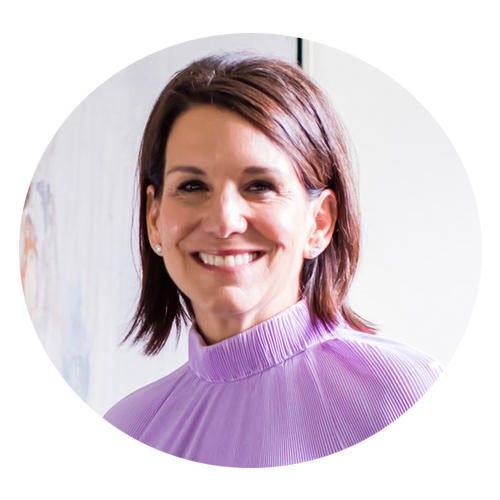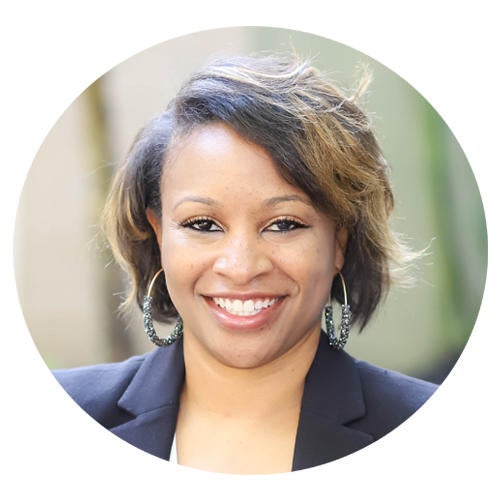The pandemic has significantly altered how we’re living and working right now, but how much of that change is here to stay? We asked eight designers—Natalie Chong, Traci Connell, Marcy Garcia, Katie Gibson, Tia Gibson, Ally Maloney Winzer, Ray Martin and Martha J. Schneider—how (and if) COVID will permanently change the way they work.

Screen Time
“The pandemic has given us time to rethink our best practices and made us pivot the business approach in different ways. I now give new clients the option of meeting in person or virtually, even if it’s a local project. When I am presenting virtually, I make sure the client has received a mood board material box, and I walk them through every detail as if we were meeting in person. Having the option to use a videoconference platform that allows you to share your screen makes the process easier, and actually enjoyable. I prefer videoconferencing over a phone call. Incredibly, I have also found that I am visiting showrooms more often than before COVID when sourcing for FF&E. Due to a lack of stock, I find it easier to shop what’s available in person, [so there’s] less back and forth.” —Marcy Garcia, MG Design Lab, Miami

Person-to-person
“I wouldn’t say that COVID has changed the way I work with clients permanently. In-person studio meetings are still the way clients can experience their furnishing option. We will continue to do this safely, wearing masks, as often as the situation allows. I do think that the introduction of video chats has opened a door to doing more of these in the long run. It allows us to have a comfortable one-on-one with clients reviewing the status of a project, which typically would have been done over a phone call.” —Martha J. Schneider, La Maison, Raleigh, North Carolina

Virtual reality
“We are now doing over 75 percent of our business remotely. We are trying to limit our exposure as much as we can, which I believe is the right thing; however, it makes the social and visual aspects of the job very hard. So much of our job is tactile, and when that portion is reduced or almost nonexistent, that makes it much more challenging to convince people to basically solely shop virtually.” —Natalie Chong, Nest Design Studio, Toronto

Well-seasoned
“I don’t think COVID has changed much about the way I work. We work in a seasonal town, and most of my clients are summer residents who live elsewhere September through May, so I am used to working with clients from a distance. For example, it is not uncommon to ship material sample packages to my client. I always make sure that even from afar, they can still experience the tactile component of the design. With fewer in-person meetings happening, I can implement these types of practices that were working successfully for me before.” —Ally Maloney Winzer, Maloney Interiors, Newport, Rhode Island

Zoom In
“COVID has absolutely brought to light a different way to work with clients. It has opened up a new line of possibilities when it comes to our out-of-town clients, as we have now perfected the Zoom presentation. We create presentation kits with labeled samples and finishes, perfectly packaged, and mail them ahead of time to our clients that are not able to come into our office. On the day of the presentation, the client unpacks each sample—like Christmas morning!—as we lead them through the step-by-step Zoom presentation. We plan on using this technique for years to come, and hopefully tapping into many cross-country projects through it.” —Traci Connell, Traci Connell Interiors, Dallas

Room for Maneuver
“The virus has permanently changed the way that I work, as I have two school-age daughters who abruptly transitioned to finishing out their year from home. Without notice and preparation, I had to inform my clients that presentations, consultations and even some installs would be done all virtually. I have always offered e-design services, but there has definitely been an increased demand for this aspect of my business. I am extremely grateful for it, because it allows me to have greater flexibility as we continue to navigate the pandemic. Even though my girls have returned to school, having more clients interested in video chats and fewer in-person meetings [means] I am able to be available for my family in case schools have to spontaneously close. Even if a client wants full design services, I expect fewer in-person meetings moving forward, since this year has proven that technology can be our friend.” —Tia Gibson, D. Claire Designs, Houston

Draw Interest
“I have been able to complete installations remotely through FaceTime, Zoom, and drawings and sketches. Being virtually on-site proved to be a fortuitous option. For presentation purposes, I have employed my Photoshop skills more than ever before, as it provides a visual for the client. For example, Photoshop can be used to transform a photo of a chair into a custom sofa. The one challenge of virtual presentations is the ability to simulate the tactile sense; thus, I continue to physically and safely visit and support the trade showrooms and vendors, as it is important to touch and feel the product that one wants to propose.” —Ray Martin, Ray Martin Interiors, Riverdale, New York

Care Package
“We utilize more online resources provided by vendors than we have in the past, and I imagine we will continue to do so even as things begin to normalize. I am not a huge fan of the virtual presentation. I think it is important for clients to be able to touch and feel the fabrics and see finishes in person. In the height of the pandemic, when we weren’t going into clients’ homes, we would create packages with samples and notes explaining everything so they could review on their own, and then we would discuss together over the phone. This time has given me a renewed faith in my employees’ ability to work from home, and I think I will be more open to having them work remotely in the future.” —Katie Gibson, Katie Gibson Interiors, Nashville
Homepage photo: A project by Traci Connell Interiors | Courtesy of Traci Connell




























